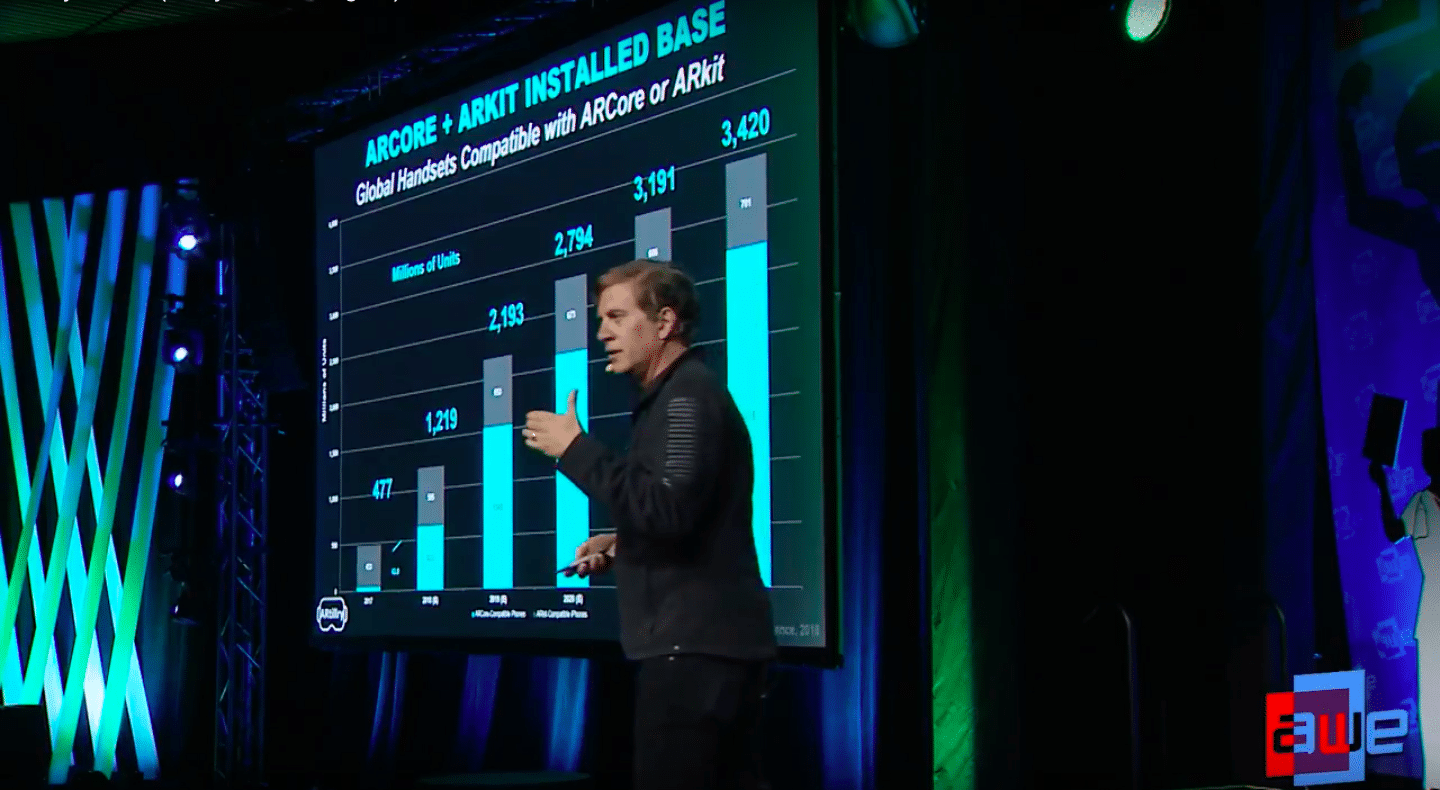
XR Talks is a weekly series that features the best presentations and educational videos from the XR universe. It includes embedded video, as well as narrative analysis and top takeaways.
Where are we in the life span of AR? You’ll get different answers from different people. For some, the answer is that it’s magic, for some it’s underdeveloped, and for others it’s all hype. For Unity XR lead and industry O.G. Tony Parisi, the answer is that we’re farther along than you think.
“Anybody that’s been in VR for a while may feel that we are in that gap of disappointment.” he said. “Now, we may be wondering if that same thing is happening for AR… I’m going to say today that it’s already here. 2017 was the year AR went mainstream, and without most of us noticing.”
In support of this notion, Parisi reminds us that revolutions happen slowly. They’re usually remembered for a tipping point, but they build from a series of events. And when in the midst of those events — as he argues we are now — they might not seem revolutionary.
“The thing about revolutions is it tends to feel like they happen all at once.” he said. “But that’s not the way it really happens. It’s a series of small changes. Its little seemingly innocuous things that add up to finally turn something to the place where it goes to a tipping point.”

One catalysts for the current AR revolution of course was Pokemon Go. Then we had Snapchat Lenses adopted at scale, and then ARKit and ARCore. All of this momentum, plus the scale of mobile AR’s smartphone base shifted developer attention (as we predicted) from VR to AR.
“Energy and attention had been on VR, and then this explosion around AR happened and there was a shift on the business side where content creators were saying this is gonna reach billions of people.” he said. “If you were a VR developer last year, you may be an AR developer this year.”
So with the stage set with these foundational components, the next step is front end magic: apps. And though many argue that AR app libraries have been disappointing, Parisi points to a fairly robust corpus (now 2000+ apps) as an entree to the next evolution of killer apps.
This includes games, the “bellwether of health for apps.” But the potential is also strong for AR’s native fusion with commerce, such as product visualization. It also includes AR ads that aren’t bespoke apps but rather dynamic ad units, such as Home Depot’s Oath-run campaign.
“You click on a little link and it launches an AR shopping experience right there,” he said. “You decorate your Christmas tree and it closes the loop to the shopping page. They got double the lift in terms of click-through which demonstrates engagement to the shopping page.”

The lesson this tells beyond strong engagement metrics is that AR can be more portable and dynamic. This leads to the concept of “AR as a feature,” instead of standalone apps. As we’ve examined for Amazon View and others, this can provide AR “training wheels” in early stages.
“Adding AR as an incremental feature is a great idea because it means it’s not an all-or-nothing proposition,” he said. “Yeah there’s gonna be some great ground-up AR games and other experiences, but it doesn’t have to be that way for everything, so this is going to make it easier.”
Moving from beginner to advance, the holy grail will be when we raise our gaze from smartphones and experience AR Glasses. “We’re so not there yet,” says Parisi, so meanwhile, there will be a dual track: Glasses in the enterprise, and scalable smartphone AR in consumer markets.
“There’s gonna be this dual world: We’ll have consumer adoption through simple but totally scalable AR,” he said. “And then headsets to do the industrial stuff. Think about that as you decide where you want to play in the world of XR. That’s how hardware’s going to be deployed.”
Lastly, the AR cloud will be a great enabler. Of course, there are sticky technical challenges like image persistence, multi-player, occlusion, etc.. But we shouldn’t let these block us from building compelling AR today. There’s a lot we can do and, to his earlier point, a lot already happening.
“This is a multi-year roadmap so these are things we can get stressed about and worry about, but we shouldn’t,” he said. “Let’s get back to the knitting for now, we’re gonna be solving these problems as an industry and as a community here together for the next couple decades.”
See the full video below.
For deeper XR data and intelligence, join ARtillry PRO and subscribe to the free ARtillry Weekly newsletter.
Disclosure: ARtillry has no financial stake in the companies mentioned in this post, nor received payment for its production. Disclosure and ethics policy can be seen here.
